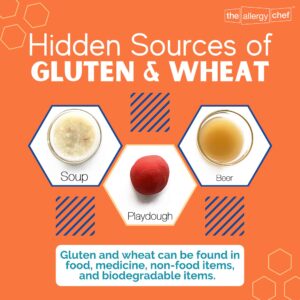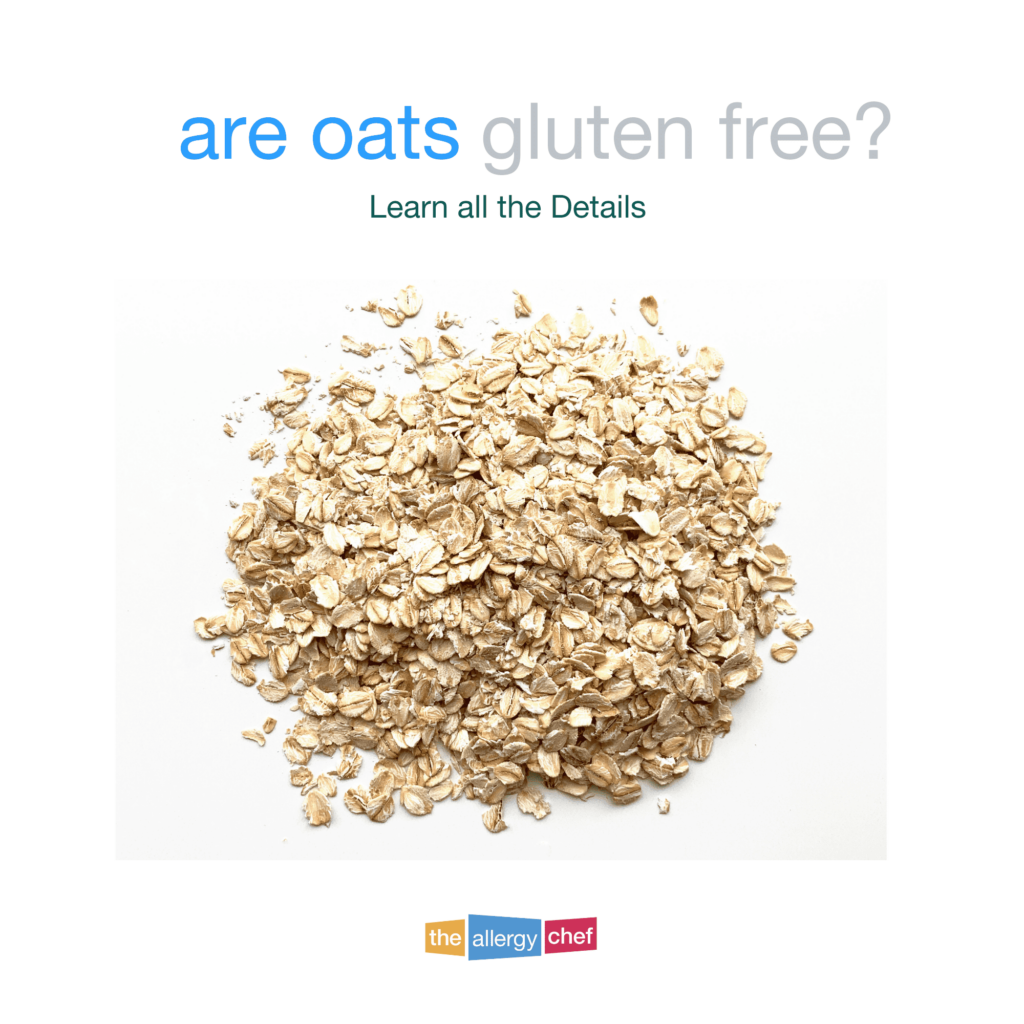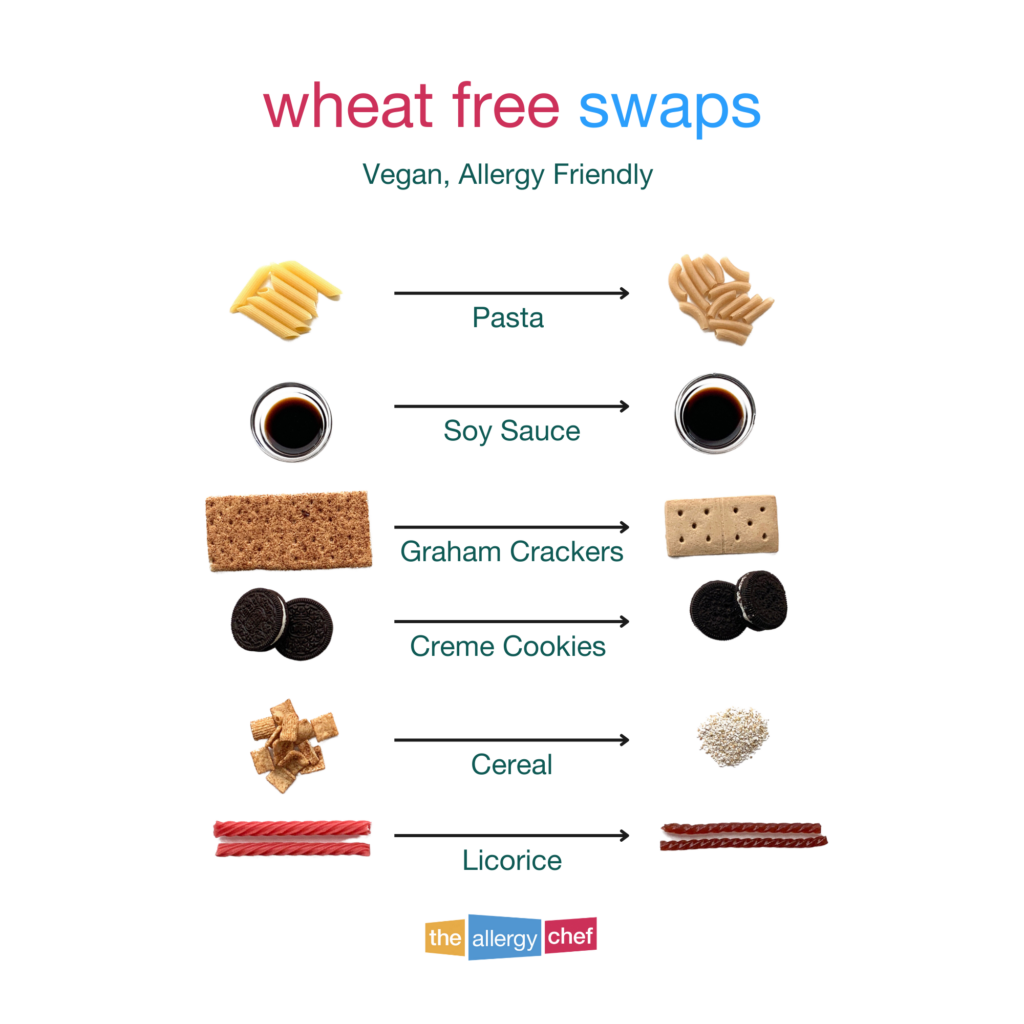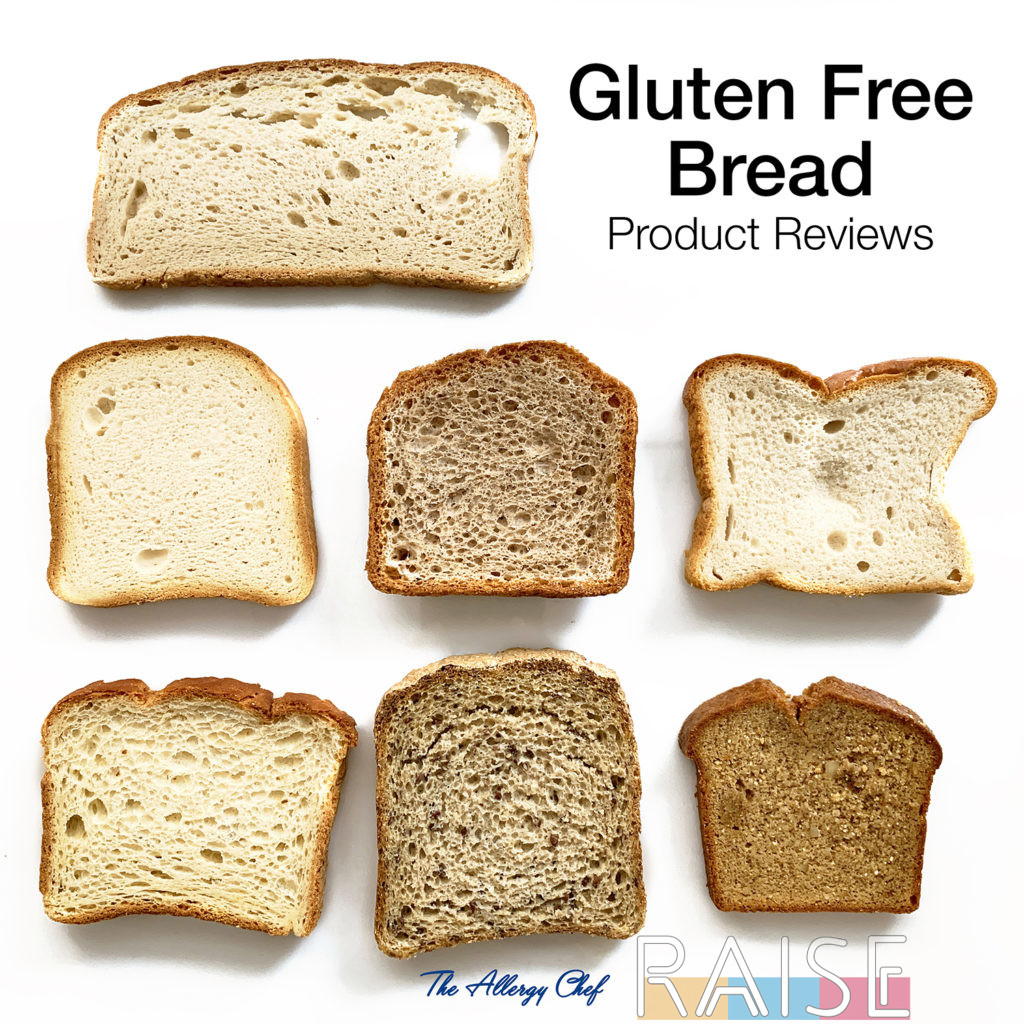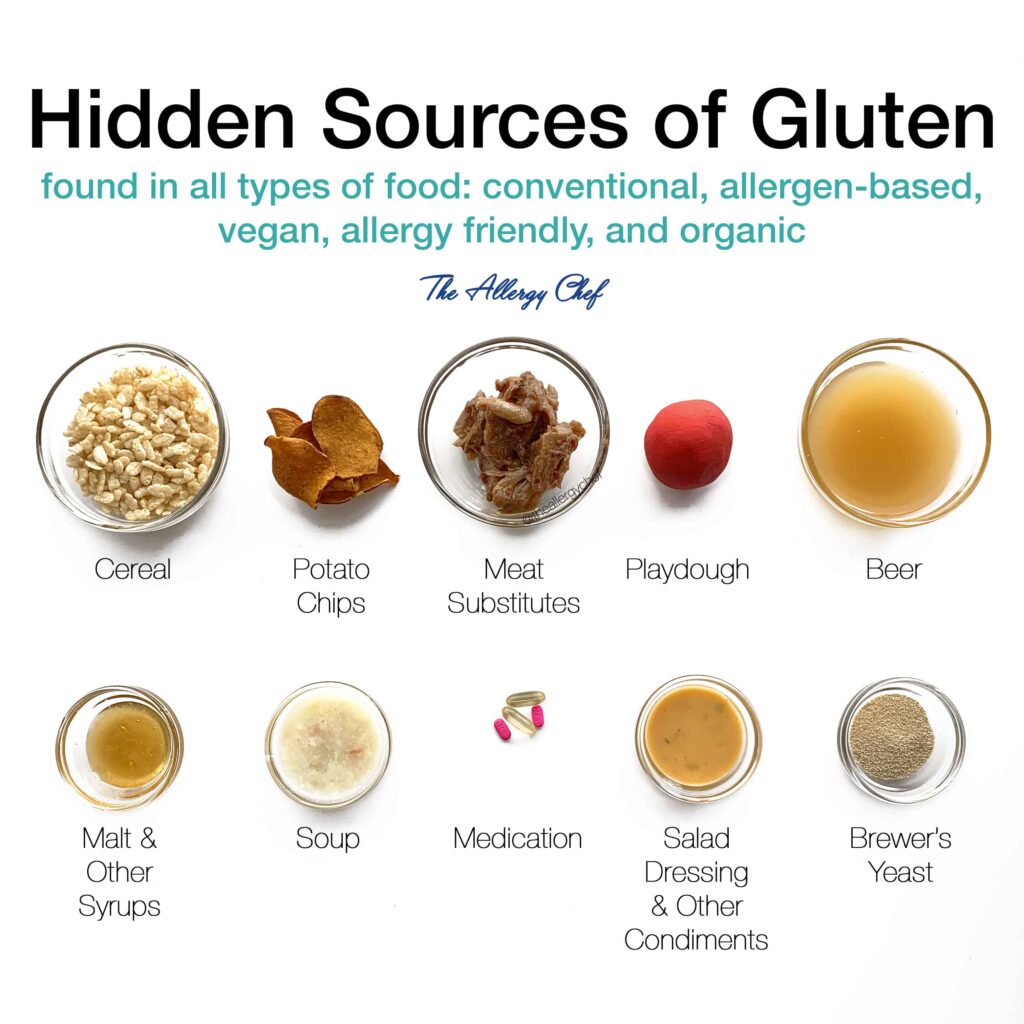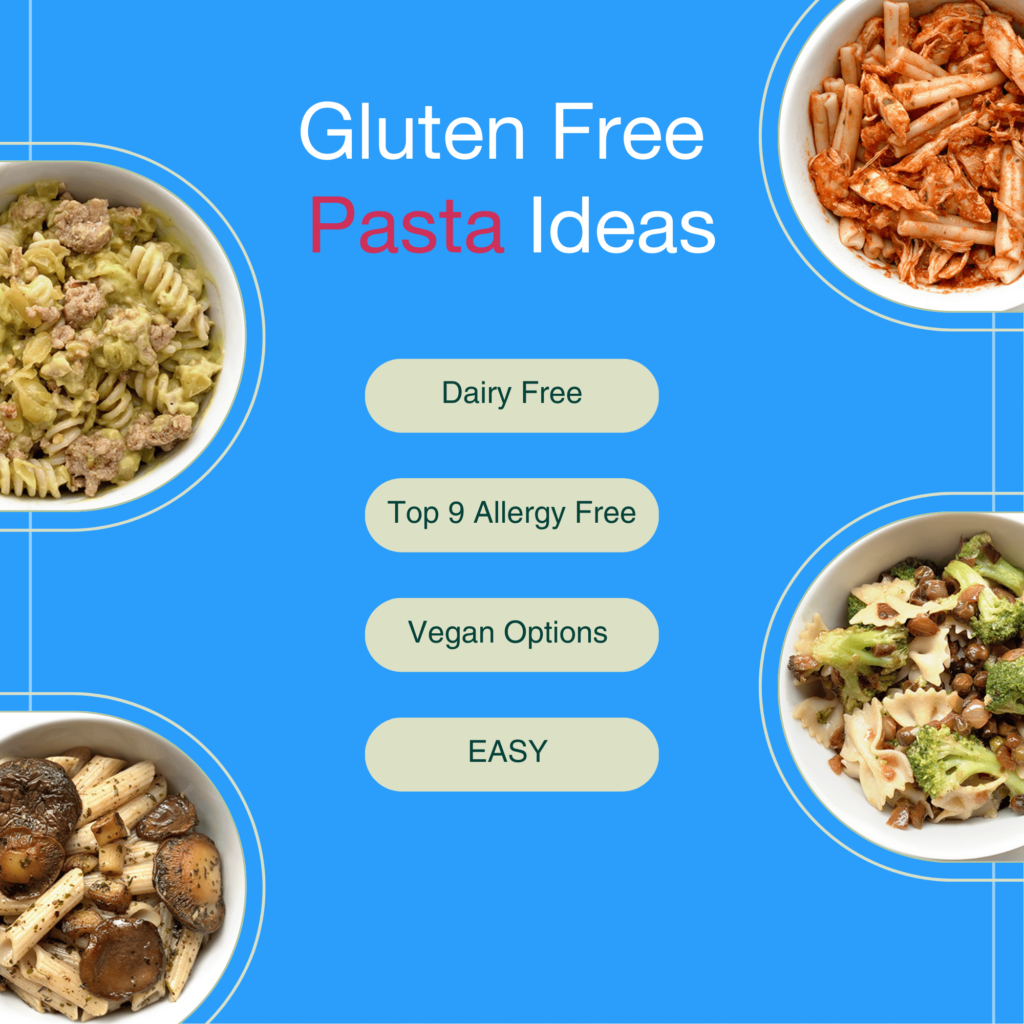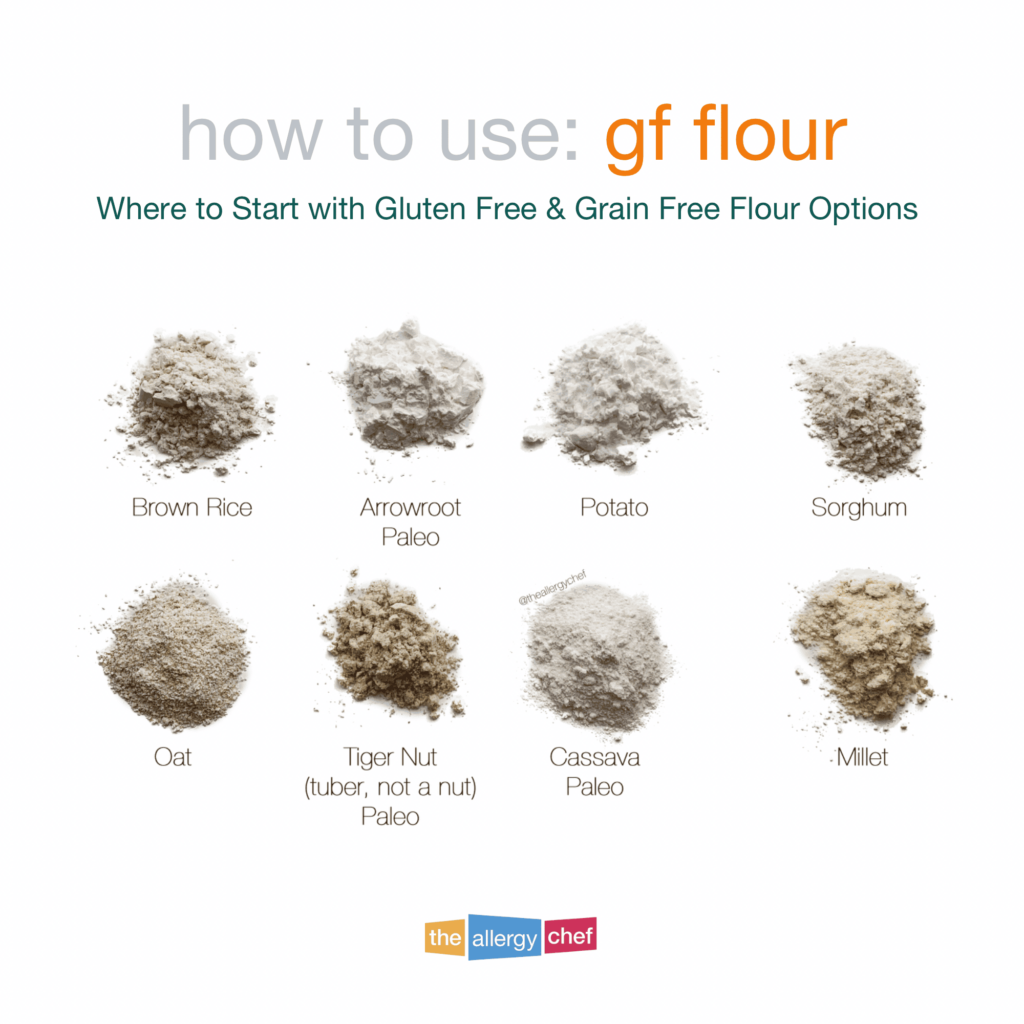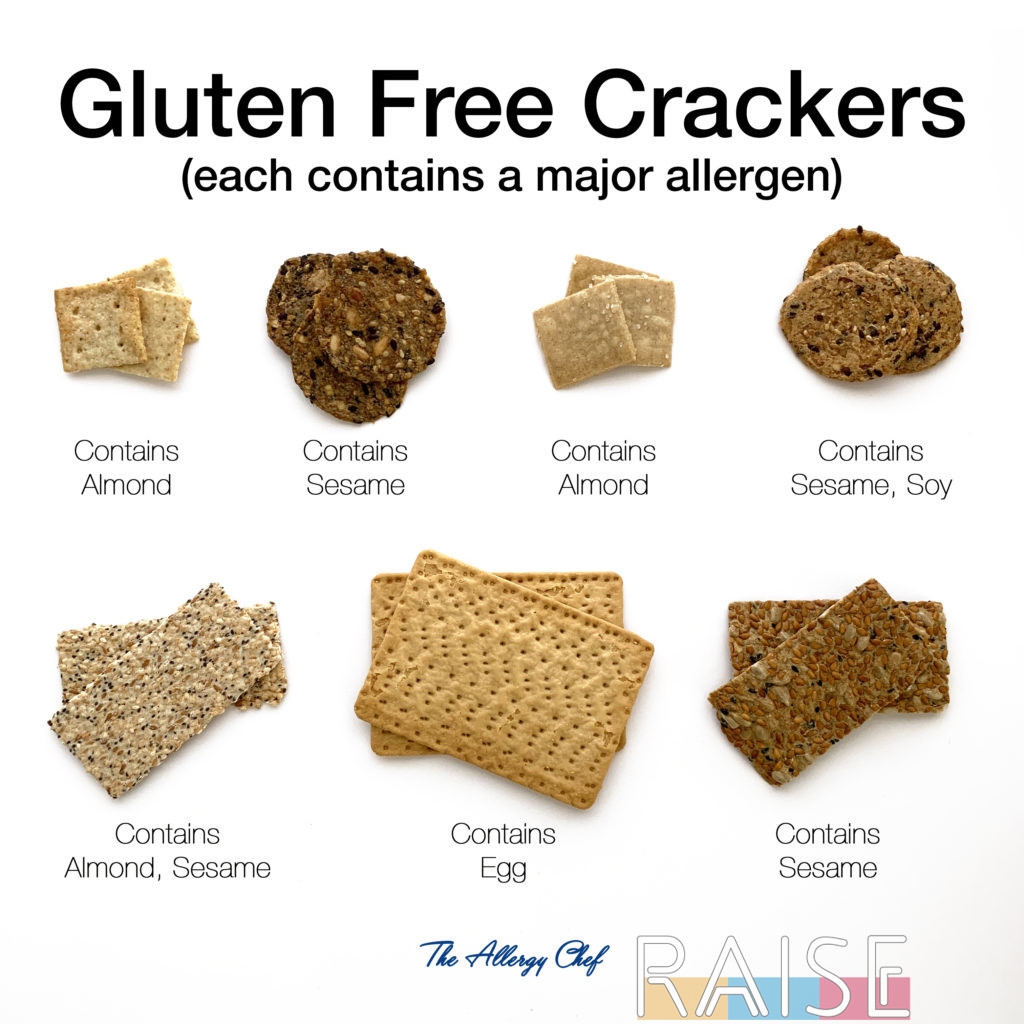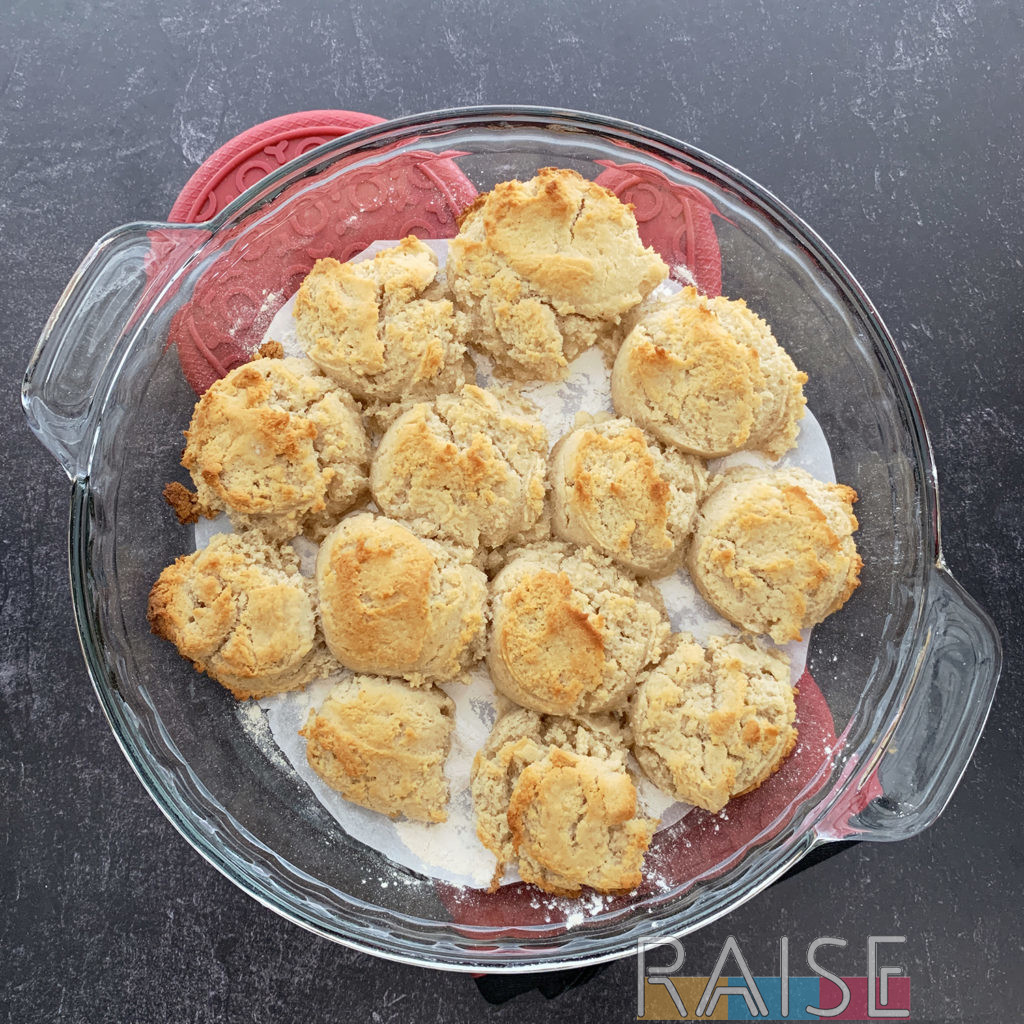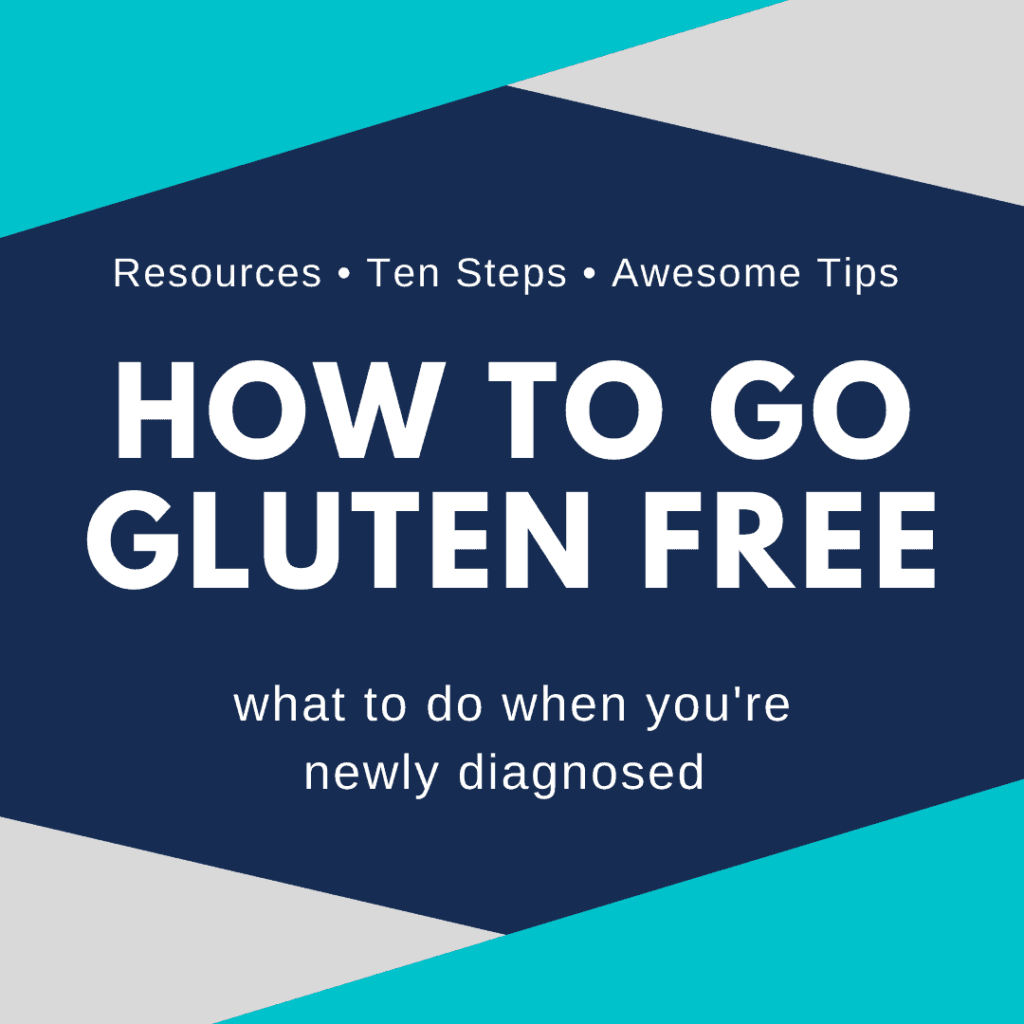Ahhh dreaded gluten. It’s everywhere, including the air (more on that later). Today we’re going to tackle the ins and outs of where gluten can be found, and at the bottom of this article you’ll find links to more resources. I’ve also put together the Gluten Free Allergy Friendly Guide: 120 products that are NOT made on shared equipment with wheat.
What is Gluten?
Gluten is a protein found in wheat, rye, and barley. It’s responsible for the elasticity in dough. When you go gluten free, you’ll find that the ingredient list on packaged foods starts to look a bit scientific. That’s because producers are trying to replicate what gluten does and the texture it provides.
Oats, depending on which country you live in can be considered gluten free, or not. This article on oats explains the matter. It’s important to note that about 25% of people living with Celiac Disease are unable to consume oats, no matter the processing.
Celiac Disease vs Wheat Allergy
Celiac disease is an autoimmune disorder. When someone with Celiac eats gluten, their body attacks itself. There is no cure, and treatment is to avoid gluten in all forms. Many people with Celiac Disease will also need to use gluten free non-food items such as soap, shampoo, and makeup.
A wheat allergy, like other food allergies is a reaction by the body (immune system) in response to something ingested, inhaled, or touched. In some cases, the response is life-threatening. Allergic reactions usually present within moments to four hours after initial contact.
IgE is the antibody at play where food allergies are concerned. With Celiac Disease, IgE is not responsible for the reaction.
A wheat allergy is an allergy to wheat only. Someone with a wheat allergy can still eat rye and barley, which are gluten containing grains. In some people, their wheat allergy may be life-threatening and they’ll need to carry an epi-pen.
Someone with Celiac Disease on the other hand, has an autoimmune disease where the body will attack itself when gluten is consumed. Over time, this can lead to many negative health complications. There are more than 200 Celiac Disease symptoms, and the combination of symptoms are unique to each person.
One of the key differences in the two is the long-term damage done by Celiac Disease. Usually with a food allergy, the response is immediate and the long-term effects from a particular reaction are little to none. However, with Celiac Disease, each time gluten is ingested, the villi in the intestines are damaged. Additionally, there’s a long list of other conditions that can be directly linked to eating gluten and living with Celiac Disease. Many people will also have the issue of a domino health effect when managing Celiac Disease if gluten is not avoided.
With a food allergy, the response is generally obvious, leading to a quick diagnosis and avoidance of the food(s) a person can not have. Celiac Disease is generally harder to diagnose as you can present with so many different symptoms.
With both food allergies and Celiac Disease, no two people are the same. Some people can tolerate more trigger foods than others. Some can tolerate cross-contact while others cannot.
If you suspect you may have Celiac Disease, or are new to your diagnosis, spend some time on Celiac.org and the Gluten Intolerance Group websites. You can also find loads more resources on RIASE. RAISE Members have access to over 600 gluten free recipes that are seriously delicious. This article on Gluten Free Swaps is another great read, as it can get you started with items people miss the most.
Does My Food Have to Be Certified Gluten Free?
Not necessarily. There’s a lot of “dirty secrets” when it comes to food certifications. Let’s just say, some companies like to bend the rules as far as possible. With that in mind, sometimes a certification only means a company had enough money to pay for it.
For this reason and many more, I’m always going to stress calling before trying a new product. You may find that a product is not certified gluten free because it’s made on a farm and the farmers have 5 plants that they grow. In this example, the farmers didn’t feel it was necessary to go through the certification process.
On the other hand, a product may claim gluten free, and when you call, you’ll learn that their practices may not meet your standards. You may also learn that this product is made on shared equipment with wheat and it wasn’t even disclosed on the website or food label. I’ve gone through some of the work for you by putting together Safe Product Guides.
Related: Check out the Gluten Free Bread Review.
Hidden Sources of Gluten and Wheat… Let’s Start with the 10 In the Photo
In the photo, I wanted to show some of the items you’re least likely to suspect, as well as some that may be tricky. These are products you’ll regularly purchase, and you should find out if they contain gluten before you continue to consume them.
Gluten Hiding In Cereal
There are loads of cereal products that don’t contain wheat or anything else that resembles gluten. At the same time though, they’re not certified gluten free, nor do they make a gluten free claim on the label/box. So where’s the gluten? It’s in the raw materials via cross-contact/contamination with wheat.
You’ll also find that some brands put a claim of gluten free on the label (even if it’s not certified). However, when you call to investigate, you’ll learn the product is made on shared equipment WITH wheat. Additionally, their practices may be on the shady side. I’ve seen this firsthand.
I can’t stress this enough: always call/email before you eat, especially if the food is for your child and not you.
Gluten Hiding In Potato Chips
On the surface, a plain sea salt chip should be gluten free. Like cereal, you’ll need to call to find out about the facility and equipment. Where full on wheat and gluten can be found is usually in chips that have flavour.
Additionally, if a company produces a flavour that contains gluten, and it’s made in a shared fryer with their other flavours, gluten can absolutely be transferred via the oil.
Gluten Hiding in Meat Substitutes
Great for vegans and those who can’t have meat for medical reasons, meat substitutes can be pretty rad… until they’re not. I’m not going to get on my soap box today about science experiments in the alternative food world. However, be warned, just about EVERY meat substitute on the market contains wheat. Some also contain soy, pea protein, and other major allergens. The Jackfruit Company makes meat substitutes that are wheat and gluten free.
If gluten free lunches and dinners are hard for you right now, check out this article on Gluten Free Pasta Six Ways. Sometimes, we just need the base idea, then we can run with it and have amazing free-from dinners regularly.
Gluten Hiding In Playdough
I’m sure many of you have fond childhood memories of playdough. Turns out, there’s gluten in playdough. Side note: if you have a corn allergy (or a corn allergy kid) ALL school supplies need to be investigated.
There are several playdough recipes floating around the web that are gluten free, so have your pick and get to making. Remember, little kids eat things they shouldn’t, and some kids continue this trend well into double digits in age. Be sure your wheat allergy and celiac kids are creating with gluten free playdough.
Wheat flour is used commercial playdough recipes, which is why you’ll need to avoid it. If you’d like to learn more about gluten free flour options to make your own playdough, this article is helpful.
Brands such as Oat What Fun and Mad Mattr make gluten free playdough you can purchase.
Gluten Hiding In Beer
Yup. There’s gluten there too. Oohuu. And did you know that not all alcohol is vegan? Some brands use fish bladder as one of the ingredients when processing their alcohol. Other alcoholic beverages can sometimes be an issue as well. Urban Taste Bud has put together an extensive guide to gluten free beer and alcohol. Like all guides online, remember, it’s just a guide. Companies can change at any moment, and they don’t have to write us a letter. Always call and double check before consuming.
If you do consume alcohol, learn what the base ingredients are. For example, whiskey (unless otherwise noted) always starts as a gluten containing grain. It’s usually rye. There’s a lot of debate about the safety of these products as some argue the gluten is gone due to the distilling. Ultimately, drink what makes you comfortable.
Gluten In Malt & Other Syrups
Malt is usually made from barley, which is why it’s not gluten free. It’s sometimes made from other plants, but that will be difficult to find in stores. Other syrups can also be a problem as they may contain barley-based malt as an ingredient, or may be made on shared equipment with barley-based malt. Alternatively, barley enzymes may be used during the creation process. Malt vinegar must also be avoided if you are gluten free.
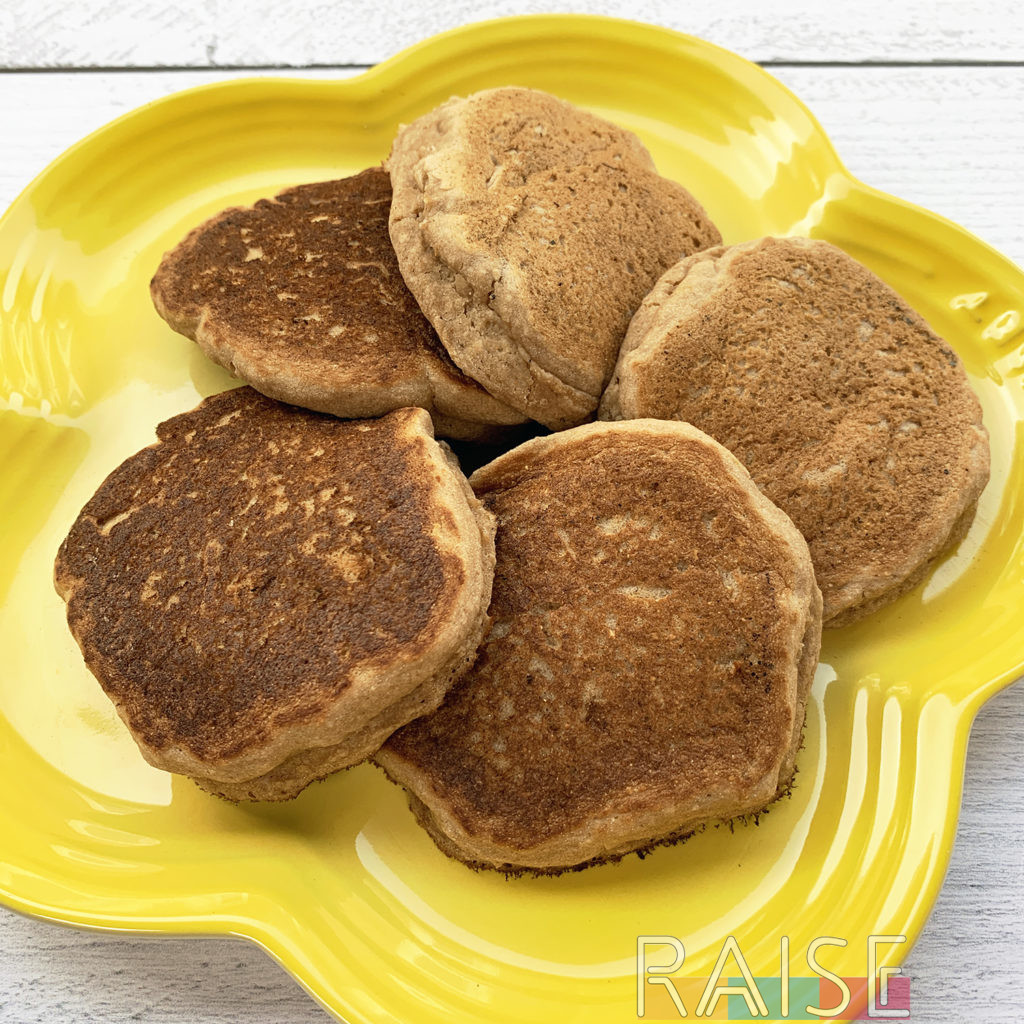 The Ultimate Gluten Free Pancake Recipe (Top 8 Free)
The Ultimate Gluten Free Pancake Recipe (Top 8 Free)
Gluten Hiding In Soup
Like people, soup comes in all shapes and sizes. Also like people, some soups are gluten free and some soups are not. Gluten in soups will usually be part of a thickening agent. Alternatively, it can also be part of a flavouring agent.
There isn’t a type of soup that will always be guaranteed gluten free when it comes to commercial options that I can recommend. Thickeners will be used in vegan soup, vegetable soups, chicken noodle soup, and everything in between.
If you need absolute certainty that your soup (and other foods) are 100% gluten and wheat free, you’ll need to frequent companies that don’t have gluten or wheat in their facility and/or supply chain. Alternatively, you can make food at home including one of the kids’ fave soup recipes: Russian Inspired Dried Mushroom Soup.
If you’re a big soup fan, I’d also encourage you to find a gluten free cracker you enjoy. The kids have reviewed several to help you with the decision.
Gluten Hidden In Medication
Whilst I can’t give you a list of medications to avoid, know that gluten can be used in the making of pills and supplements. Gluten can be found in many forms in medication based on the manufacturer’s formula. Beyond Celiac has put together an extensive article on gluten in medication.
The good news is that there is lobbying being done to change label requirements in medication. Hopefully one day in the future this won’t be something you’ll need to be concerned about.
Update: there has been progress on this and you may see sooner than later gluten labeled on medication.
Gluten In Salad Dressing (and other condiments)
Whilst I have yet to find gluten in ketchup or mayo at the store, gluten can be in just about every condiment on the shelf. BBQ sauce, marinades, tamari, and soy sauce should especially be investigated. This includes vegan options too. Remember, wheat, rye, and barley are all vegan ingredients.
My personal rule – the more ingredients there are on the label, the less likely I am to purchase the product. Why? Simple: every ingredient increases the chances of cross-contact/contamination with something we can’t have in our home.
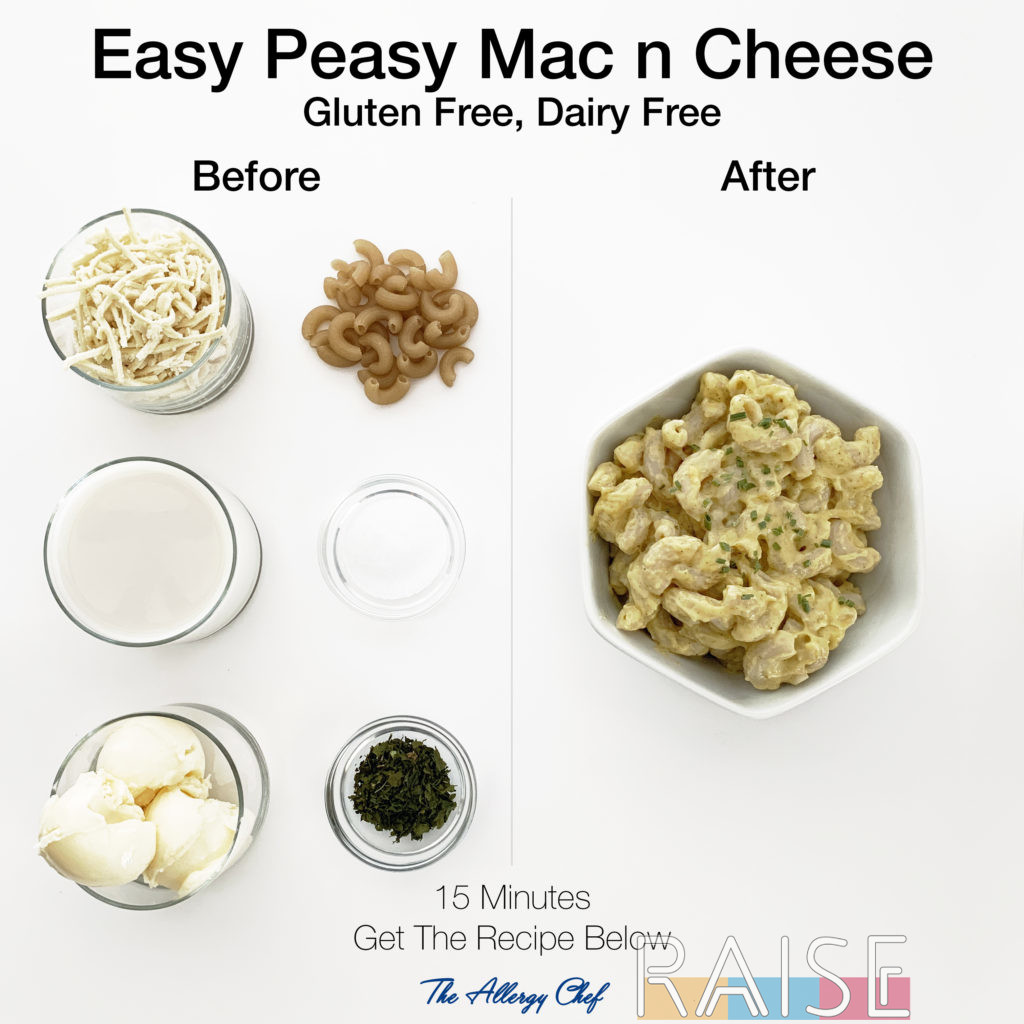 Easy Peasy Mac n Cheese: Gluten & Dairy Free
Easy Peasy Mac n Cheese: Gluten & Dairy Free
Gluten In Brewer’s Yeast
Brewer’s Yeast is a yeast that’s used primarily in wine-making, and the brewing of top-fermenting beer. Baker’s and Brewer’s Yeasts are two different strains. Live Strong has a great comparison article if you’re interested.
The term brewer’s Yeast can refer to the yeast before AND after use. The general rule is: if a product lists brewer’s yeast as an ingredient, and the product is not clearly labeled gluten free, it should be avoided.
This is because if it’s spent yeast, it’s been used in the beer/wine making process and may contain trace amounts of gluten because of other ingredients it may have come into contact with.
Yeast extract and autolyzed yeast extract may also be made from spent yeast, so they should be avoided as well.
Finally, all yeast *can* be grown on gluten containing starters/media. It’s important to know where your yeast is coming from, if you can tolerate it at all.
When baking, we stick to the brand Red Star Yeast, as it’s a gluten free product, made in a dedicated facility free from major allergens. If you’re struggling in the gluten free bread department, check out our Amazing Gluten Free Bread Roll Recipe (GF, Top 9 Free, Corn Free, Seed Free).
Gluten: It’s In the Air
As promised, let’s talk about this. Think back to the last time you opened a bag of flour, any flour. When you closed the bag, did you see the flour particles go into the air? Now, think about that on a larger scale. Imagine you go out to eat and the place says they can serve you gluten free. Watch this video to see this in action.
If a facility makes cookies with wheat round the clock, the flour is going into the air, and settling all over their surfaces and equipment. This, along with many other reasons, is why a dedicated gluten free facility is best.
If dedicated isn’t an option, be sure to ask companies what their protocols are. At some locations, those “round the clock cookies” are made in a separate room. Or, they may make cookies from 6am to 9am, then do complete wipe down of all surfaces.
If that makes you uncomfortable, make your own! RAISE has so many dessert recipes to get you started. This Gluten Free, Allergy Friendly Cookie Tart is one of my faves.
Other Hidden/Overlooked Sources of Gluten (yup, there’s more)
- Foods Labeled Gluten Free (If it’s made on shared equipment or in a shared facility, it may not be truly gluten free. The sourcing of raw materials is also very important.)
- Communion Wafers/Crackers
- French Fries
- Multi-Grain Chips and Tortillas
- “Starches”
- Soy Sauce
- Pre-Seasoned Meats
- Baked Goods & Pastries (Cake, Cookies, Cheesecake, etc.)
- Restaurant Food (Things that you wouldn’t think have gluten may, such as eggs. Eggs are gluten free by nature, but the restaurant may mix them with gluten-containing ingredients).
- Panko Breadcrumbs
- Granola and Granola Bars
- Croutons
- Maida, found in Indian Cuisine, made from wheat flour
- Bio-Degradable products made from wheat straw (more a concern for a wheat allergy than CD as the products are usually from the stalk and stem BUT it can still be a risk for CD as well)
Gluten can also hide in non-food items such as soap, shampoo, makeup, and hand sanitizer. If you’re feeling overwhelmed about starting a gluten free diet, this article is a HUGE help.
Your Top Gluten Free Questions Answered
I’ve been where you are, and being new to gluten free isn’t easy for most people. Here are answers to questions that are often asked about gluten free living.
Is There a Gluten Free Ingredient Checker?
Yes and no. There are apps that use the information provided by manufacturers and FDA databases to know if a product is gluten free on the surface. So far, this Gluten Free, Allergy Friendly Product Guide is the only thing I know of where the equipment, facility, and supply chain are taken into account.
For those who can’t have trace amounts, I would never trust the apps completely. They’re great for getting new leads on products that could work for you, but confirming information with a company is a must. Plus, companies can change at ANY TIME. Most of the apps and products on the market aren’t factoring this in.
Is There Gluten in Beauty Products?
Yes, but not all. It’s going to vary by brand. Labeling laws for non-food products isn’t the same, so you’re going to have a harder time figuring things out.
The easiest thing to do in my opinion is to look for brands who are selling themselves as gluten free, rather than spending time investigating hundred of brands. You can then contact them to make sure their gluten free claim is up to your standards. There are a few bloggers who talk about beauty products including Jennifer from Living Freely Gluten Free, Coral from Gluten Free with Coral, and Erica from Celiac and the Beast.
Are There Code Words For Hidden Gluten?
In a sense, yes. There are a long list of words that alert someone who is gluten free or allergic to wheat about the possible presence of gluten. This includes words such as barley or spices. When you understand how products are made and when gluten is used, then you know what the code words are.
The Celiac Disease Foundation has a page that has more information, in addition to what you’ve already read in this article.
How to Tell If Food Has Gluten In It?
As I shared earlier, the first way to know is to read the label. This will let you know if there’s gluten in the final product. From there, you’re going to need to contact a company to find out about the equipment, processing, and more.
The good news is that there are loads of products that are naturally gluten free. Fruits and vegetables are a great example of this. When someone is new to going gluten free, I actually suggest avoiding ALL “gluten free foods” and go back to the basics. This allows them to get back to neutral without the added stress of figuring out if something really is gluten free.
Once you’ve mastered the basics, then start looking for gluten free products or substitutions. It’s also important to note that a lot of gluten free products read like a science experiment, and aren’t always a good choice, especially for those with multiple health conditions.
These meal plans might be handy, and you can download them for free in the downloads section of the website.
 |
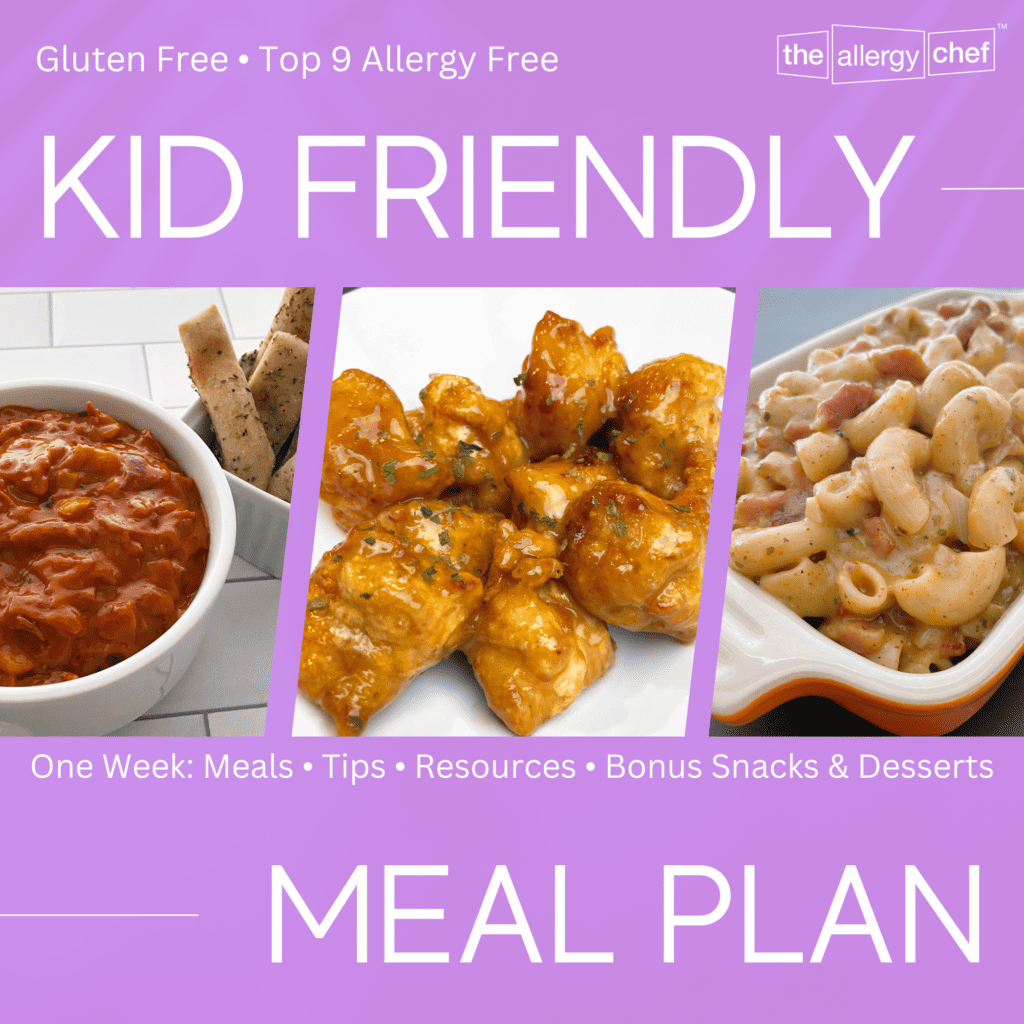 |
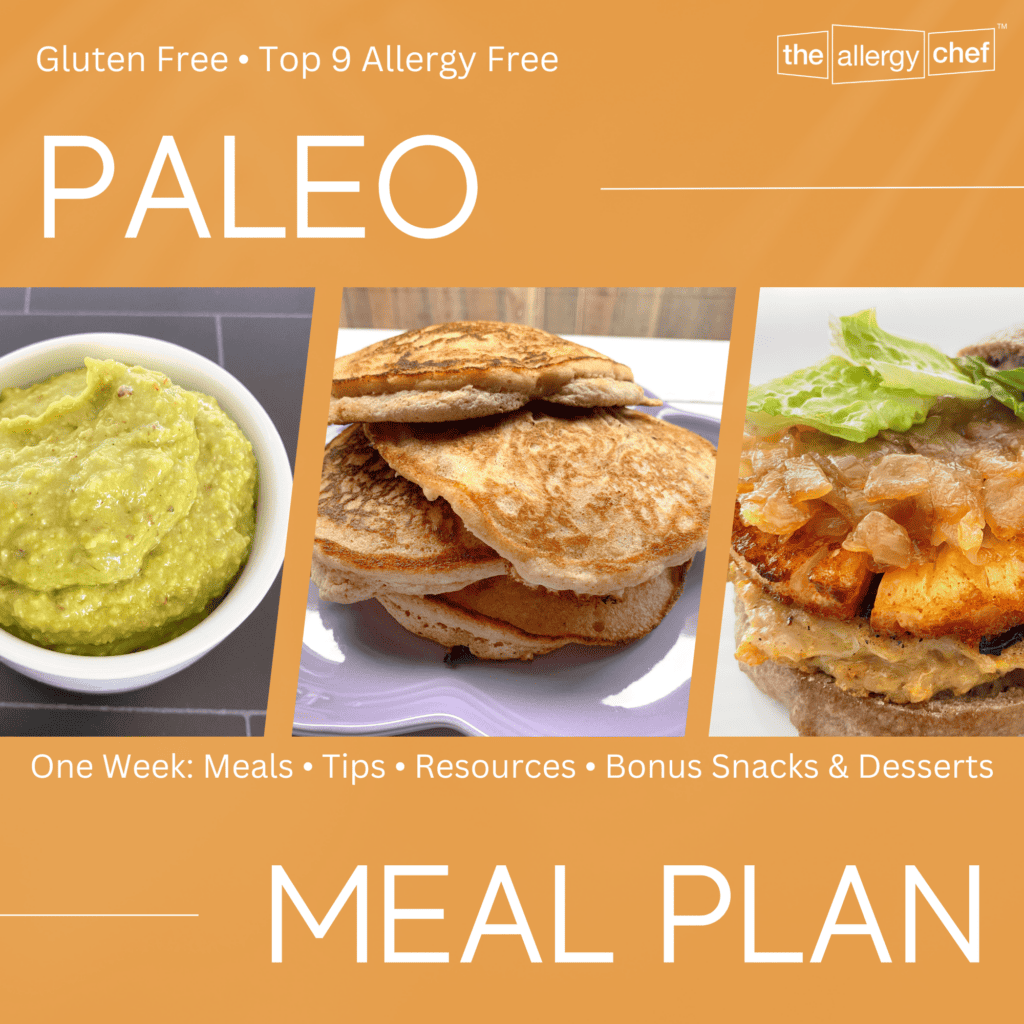 |
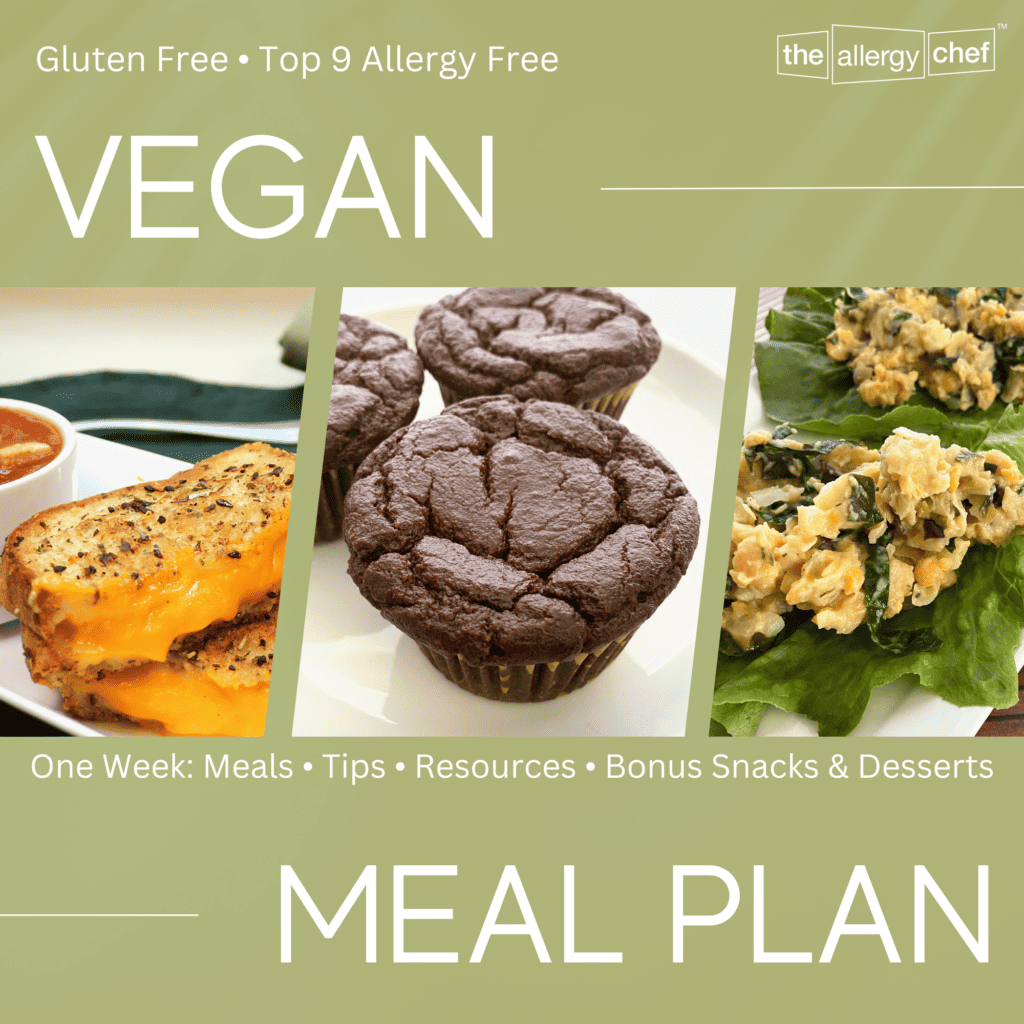 |
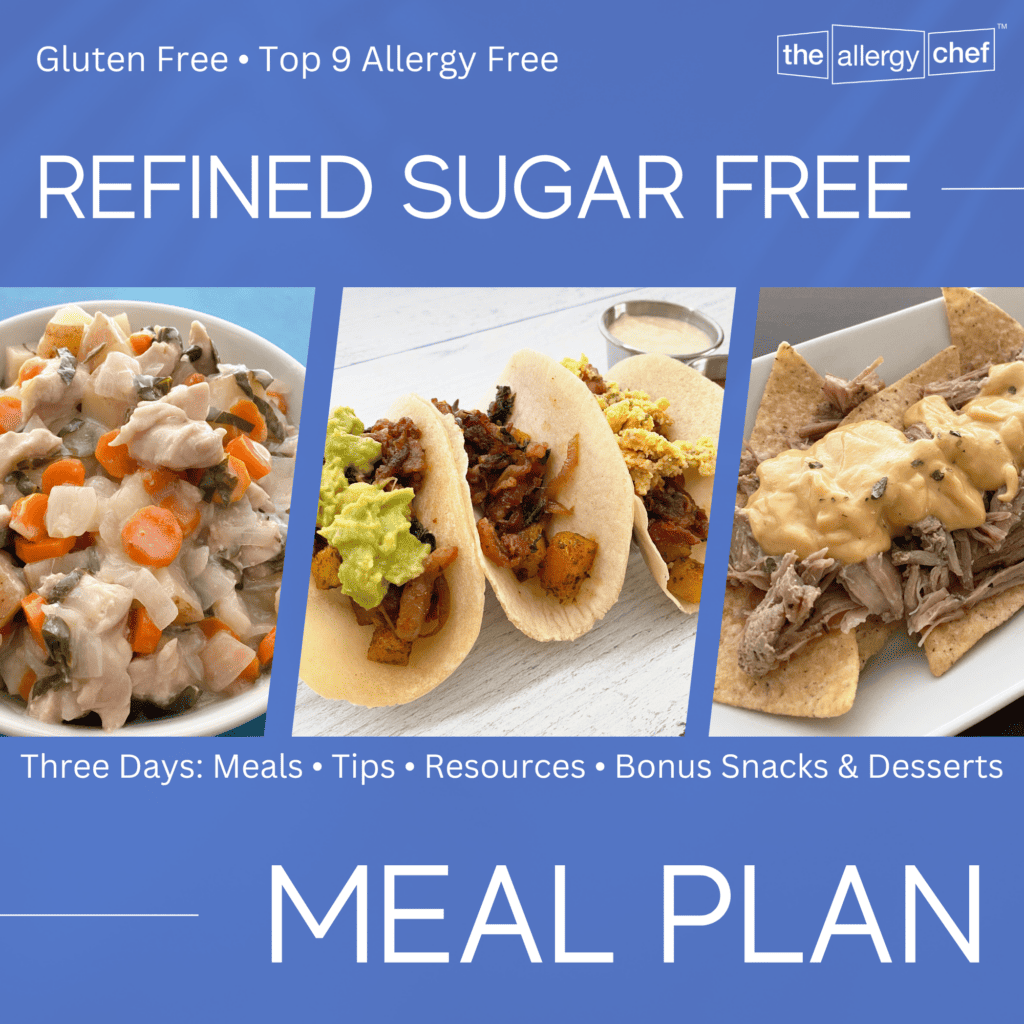 |
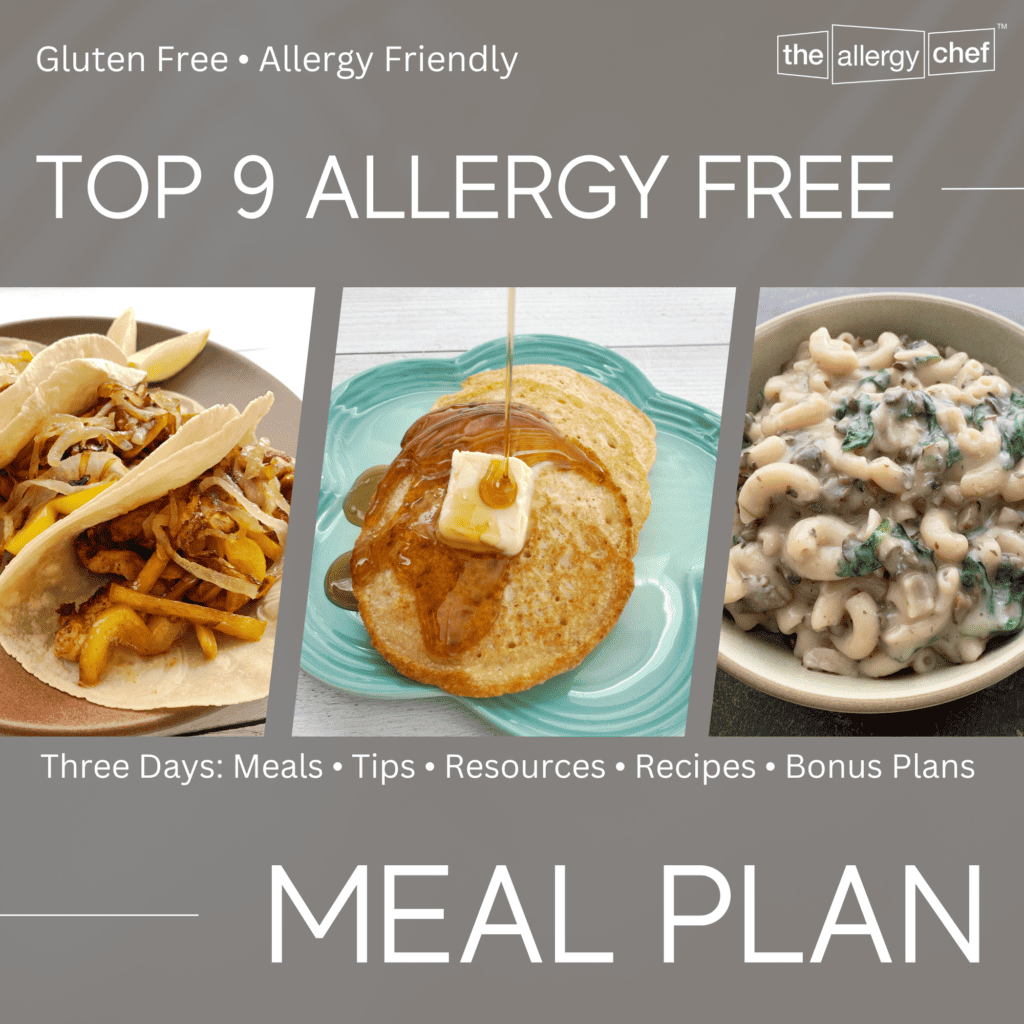 |
Where is Gluten Most Commonly Found?
In addition to the top 10 hidden sources of gluten that I talked about in today’s article, gluten is in a lot of other places. Scroll back up a bit to the bullet list that says other hidden/overlooked sources of gluten. That list is a great starting point in understanding where you’ll most likely find gluten containing grains.
What Foods Surprisingly Have Gluten in Them?
Surprising foods with gluten… I’m going to answer this one from a personal take. The reason being, I think to each his own. You may find it surprising that there’s gluten in medication, yet I’m not. In fact, it takes a lot to surprise me about food because I have 20+ years of experience in the free-from world.
Fun fact, the hidden allergen that’s surprised me the most in all my years was actually fish bladder in alcohol production, but I digress.
Personally, I find the use of gluten in medication and soup to be the two that bother me the most. Not surprised, just really bothered and that’s because it’s SO UNNECESSARY. There are so many other ingredients companies could use for binding and creation of their end results.
Additional Resources
RAISE: Recipes, resources, and more. The Advanced Recipe Search allows you to use more than 85 filters to customize recipe results to meet your individual needs.
Free & Friendly Foods Cookbooks: All 100% gluten free (and allergy friendly).
Gluten Free With Coral Coral offers an excellent course, coaching, and information too.
Yum Gluten Free Australian based and super awesome. They have built a community online, and also have digital magazines.
Living Freely Gluten Free Love her so much! Great information and resources.
Spokin App: Get help with gluten free living and food allergies as well.
Find Me Gluten Free App: Great for finding places to eat out, and has user based reviews.

